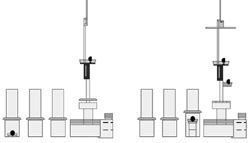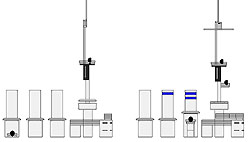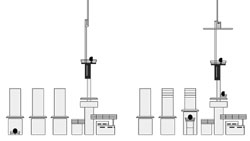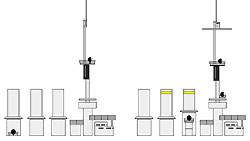| The Five Sisters of the Deutschland Class Compared In these drawings, I have compared the early and 1916 versions of the five ships of the Deutschland-Klasse. All five ships have been drawn with emphasis on the masts, funnels, searchlights, "crow's nests", and upper bridge platform above the Kommandoturm (Command Tower or Armoured Bridge). |
S.M.S. Deutschland Click Once To Enlarge |
S.M.S. Pommern Click Once To Enlarge |
S.M.S. Hannover Click Once To Enlarge |
S.M.S. Schlesien Click Once To Enlarge |
S.M.S. Schleswig-Holstein Click Once To Enlarge |
| Colour Scheme With the coming of war in 1914, heavy units of the German Navy were painted in a pattern adopted in 1896 referred to as "Colour Scheme No. 9" which was based on the use of increasingly lighter shades of grey as from the waterline up to the superstructure. Light grey was used on the vertical surfaces of the superstructure and funnels from the weather deck up into the mast-tops. Funnel caps (if present) and parts of the masts were painted Black. Prior to the Battle of Jutland on 31 May 1916, the masts of German Capital ships were painted light grey up to the base of the centre mast and from there up to the spotting platform or crosstree/spreader the mast was black, with light grey again used above that. To distinguish specific vessels in the Battle Line of the fleet, the Imperial German Navy chose to paint horizontal stripes of either white, red, yellow or blue on one or more funnels to distinguish individual ships, their squadron, and their place within the squadron. The designations (and number of stripes a ship may wear) changed as new ships were commissioned and ships changed Divisions or squadrons. (source: Tom Tanner The German Navy in World War I ) |
 |